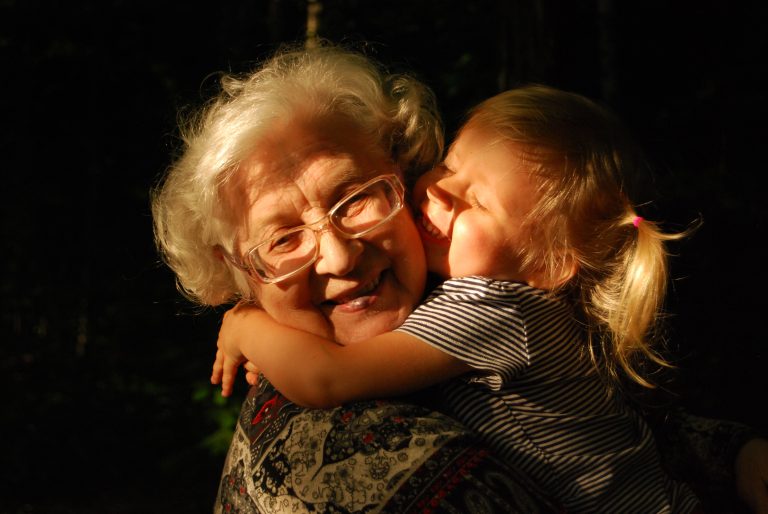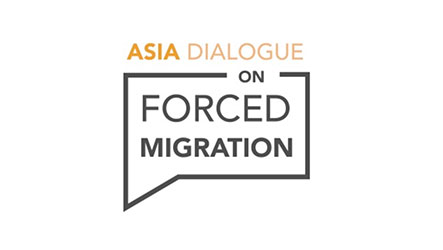 Originally published on ABC Unleashed on May 22, 2008.
Originally published on ABC Unleashed on May 22, 2008.
The budget makes clear that Rudd Labor has honoured its promise to maintain funding to private schools, to the tune of approximately $6.5 billion dollars, compared to $3.5 billion for public schools. While the Howard Government’s seriously flawed funding formulae must ultimately be revamped to divide this money more fairly between non-government schools, and commonwealth investment in state schools will increase, there should be no doubt that Federal Labor will continue the provision of ‘state aid’ that it has supported since Whitlam. While the debate about the right of non-government students to commonwealth funds appears to be over in the ALP, the new government should think laterally about what the community gets for its investment in private schooling – roughly equal to its funding of higher education. Here’s a thought. Rather than setting up competition between public and private as occurred under the Howard Government, why not use commonwealth funding of schools to bring the two rival sectors closer together, to encourage them to cooperate in the one ‘public’ system? After all, both sectors receive public money and are regulated by government in terms of curriculum and standards in teaching.
That the Rudd Government is beginning to move in this direction can be seen in its ‘Local Schools Working Together’ program that provides $62.5 million in the Budget to help government and non-government schools cooperate at the local level between now and 2011.[1] Originally announced as Labor policy in March 2007, the initiative involves government and non-government schools sharing scarce facilities such as science labs and libraries.[2] The funds provide for pilot projects in both new growth areas where facilities need to be built in both sectors, for new or upgraded facilities in existing schools and special projects that address needs in science, language or technology. Writing in the Weekend Australian, Kevin Donnelly is critical of this initiative as indicative of creeping bureaucracy and a Labor prejudice against private schools that will cruel what is unique about some private schools.[3] I believe it is a creative response by the government to the social reality that students move between public and private schools, and make friendships across this artificial divide. It bodes well for education reform that marries the pursuit of excellence with the Australian values of mateship and egalitarianism. Last week Minister for Education and Deputy Prime Minister Julia Gillard made explicit that the Rudd Government wanted to move beyond the old public versus private debate that has marred the policy responses of both major parties for so long.[4] Rather than wanting to socialise private schools, as Donnelly implies, Gillard argued that ‘[t]here are examples of excellence, and of unacceptable underperformance, in schools of every sector. There is no point in putting labels on schools in the government, independent and/or Catholic systems. It is part of the old education debate.[5]’
I contend that each sector has much to learn from the other, and public funding could be used to encourage cross-fertilisation and reduce current
inequities and social, ethnic and religious division. Private schools need to jettison vestiges of elitism and state schools need to try methods used in
private schools that improve teaching, student performance and accountability. There is a creative, productive and social inclusion dividend from mixing children of different backgrounds, outlooks and abilities, so best practice reigns. Closer collaboration would match reality on the ground. Many families use both sectors at different times, at different stages of their kids life. Increasingly, busy, so-called working parents have children scattered between a public primary, a private comprehensive and a selective state high – depending on what works best for their child in terms of a school’s specialisation, how they did in entrance exams, what they can afford at the time, religious conviction and whether they want co-ed or not. Some of the greatest defenders of public education attended Catholic or Protestant schools and follow an enthusiastic embrace of public primary for their children with non-government schools in the secondary years.
Why are parents prepared to pay for what the public system offers for free? It’s not just that the Coalition (and now Labor) provided so much money to the private schools. Some parents, especially those with tertiary education themselves, appreciate that more teachers have academic subject specialisations and higher degrees due to staffing freedoms in many non-government schools, and offer alternatives in languages, the classics or extra-curricula arts and sports. Other parents value the superior (and inequitable) material resources (playing fields, equipment, smaller class to teacher ratio), a perception of greater discipline, accountability of teachers to parents (via homework diaries that must be signed, phone calls and regular meetings). However, contemporary twenty-first century parents seeking academic or cultural specialisations can be disappointed when they encounter the old fashioned elitism and ‘rugger bugger’ exclusivity that persists in too many non-Government schools, especially the older, higher fee paying institutions – despite the reality that most non-government schools are now ethnically and religiously diverse. Just as the Howard Government tried to promote flag waving and graded plain English reports in state schools, a Labor government should use the carrot of Federal funding to wean private schools off this Edwardian snobbery and into contemporary Australia.
Private schools who wish to receive public money would be encouraged to be responsible citizens by a variety of funding conditions. Building on the fine example set by the indigenous scholarships offered by Cranbrook and Geelong Grammar, (among many private schools) they should increase the number of scholarships offered to less well-off students and have to show good cause for turning away students with learning difficulties. Team sport should be played with local state schools, comprehensive and selective rather than those deemed part of an antiquated (and elitist) GPS rating. This would also have the environmental dividend of getting private school parents ferrying their kids to sport out of the traffic jams on weekends. Private schools should cooperate with local state schools in extra-curricula projects, such as music tuition, drama, debating, the Duke of Edinburgh awards and cadets. As a state school student in Wollongong in the late 1970s I participated with private school students in the NSW government sponsored State Youth Theatre, where I saw the horizons of both groups raised by this crash course in social reality.
Private schools could also cooperate with local state schools in some core curricula lessons where a local state school might lack expertise, for example ancient languages. Private schools wealthy in facilities should have no difficulty sharing them with local state schools, especially sports equipment, playing fields or technology.
Despite generous increases in federal government funding some of the larger independent schools continue to crank up their fees each year, suggesting they are seeking to maintain distinction for their core customers for whom money is no object. Those private schools receiving public money should agree to cap their fees for a stipulated period to allow access to a greater proportion of the public.
By such measures the Federal Government can demand good citizenship for its investment. Although it will review the criteria of the current inequitable socio-economic funding model, the Rudd Government has made clear that state aid to private schools will continue, so its important Labor does not hand over our money without seeking some mutual obligation to the community in return. Independent schools wishing to avoid these community obligations and maintain an elitist course are free to not accept public funding. Most low-cost non-government religious schools are already doing the right thing by local communities, and those schools that do not wish to associate with the public need not bother the taxpayer. In relation to the additional funding made available in the Local Schools Working Together program, Kevin Donnelly seems to be arguing that private schools should be given public money ‘no strings attached’, or else they ‘will no longer be seen by the community as special an their unique character will be compromised’.[6] But state schools must meet rigorous benchmarks from both the Commonwealth and state governments, and it is unlikely that autonomy or decades of tradition will be destroyed by private and state school students learning and playing some things together – afterall in the real world these kids are often neighbours, cousins and even siblings.
In exchange for their funding, state schools, through State Education departments and principals, must cooperate with independent schools in the above, and also implement a variety of practices that kick goals in the independent sector. Public schools should enhance accountable to parents by adopting mechanisms used by independent schools, such as daily diaries with remarks from teachers, regular email and phone contact with parents. Decentralise management to local school boards and principals – a move currently underway in NSW. Australia is rare in the OECD for having centralised state-wide bureaucracy rather than local control. More imaginative use must be made of the ‘aftercare’ space from 3 to 5 pm (when parents work) to provide school-based value-added extra-curricula alternative experiences as do private schools in music, creative writing, drama, sport, debating, and supervised homework. Ditto in vacation care.
Public schools have much to be gained by going back to past practices that worked well for them. They should reinstate weekday and Saturday team sports in addition to individualised gymnastics. And as a matter of urgency return to reports that include competitive positioning of students in the class and/or year, marks out of 100, and individual comments from teachers in preference to the routinised computer generated ‘outcomes’ jargon now foisted on bamboozled parents. Competitive marks may be contrary to the experimental education fads foisted on students in the late 1970s and 1980s but they were long part of the state school ethos to good effect- all my reports from Port Kembla primary in the early 1970s still had such information and boys and girls rose to the competitive ethos as we did in sport. This was a school in what would now be
condescendingly termed a ‘disadvantaged area’ that worked minor miracles with Macedonian immigrants from peasant backgrounds and native-born working class Ango-Celts.
Most importantly public school teachers’ salaries should be increased to parity with independent sector in exchange for working comparable hours, including involvement in extra-curricula activities and meeting accountability benchmarks. Equity and value for investment requires that the educational qualifications of teachers coming into the state sector (especially as the baby boomer cohort retires) be lifted to the same level as the private schools, in terms of good subject-based university degrees rather than the more generalist education qualifications. Academically competitive teachers scholarships that pay HECS and a modest living allowance, similar to those that educated the teachers of the 1950s, 60s and 70s, should be reintroduced, contingent on the student undertaking a subject-based degree followed by a one-year education qualification. Scholarships will be based on HSC results (or equivalent and not means-tested) and recipients will be required to teach for at least 5 years.
Some of the above changes in state school teaching and operation will require more funds than the public sector received under the previous
government. But it is important that those who advocate more funds for state schools consider what is done with that money, and what cultural and structural change will lift learning standards so that state schools compete equally with the private sector. The Howard Government used funding to schools inequitably to engineer social division and faux nationalism. While acknowledging the ‘strong advocacy’ of the camp followers of ‘public versus private schools and which system deserves more government support’ Gillard has declared ‘it is time for all of us to recognise that the old-style education debates need to be updated’.[7] It is significant that Gillard is also Minister for Social Inclusion, a value important to most Australians. Reactions to an earlier version of this article on ABC Unleashed demonstrate that partisans on both sides of the long running schools debate rather enjoy the ganglands of the public versus private stoush. Many idealistic public school advocates for the very best of reasons would prefer to insist
that Federal funding of private schools simply cease. But given that since Gough Whitlam’s leadership the ALP has been committed to state aid, I would like to see some strings attached to the money. The Rudd government has the opportunity to build on the innovative Local Schools Working Together initiative to use core federal funds to engineer a bridge between students too long divided by dated sectarianism, to reconcile independent and state schools in a single ‘public’ system that raises standards for all. That’s what I call a real education revolution.
[1] Australian Labor Party, New Directions for Our Schools – Local Schools Working Together, March 2007
[1] Australian Labor Party, Budget Measures 2008-09
[2] Australian Labor Party, “Labor’s Local Schools Working Together Program: Bishop Bungles” (Media Release), 20 March 2007
[3] The Inquirer, May 31 2008, p. 20
[4] Julia Gillard, “No more public v private debate”, Sydney Morning Herald, May 29 2008.
[5] Julia Gillard, “No more public v private debate”, Sydney Morning Herald, May 29 2008.
[6] Weekend Australian, 31 May 2008
[7] Julia Gillard, “No more public v private debate”, Sydney Morning Herald, May 29 2008.
Biographical Note:
Tony recently completed his PhD thesis in Australian history . His undergraduate honours thesis was in the history of NSW schools, after
which he conducted research into the reform of the post-compulsory years of schooling for the then Education Commission of NSW, and into
social class, education and employment for both the community youth sector and for a series of documentaries on the ABC that included
Nobody’s Children, Hard lessons and Growing Up Fast.



